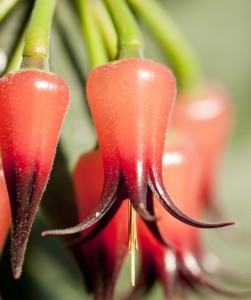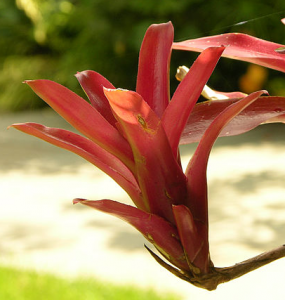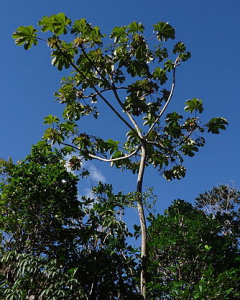Step into a Tropical Paradise
Posted in Exhibitions on January 8 2014, by Sonia Uyterhoeven
Sonia Uyterhoeven is the NYBG‘s Gardener for Public Education.

From January 18 through February 23 the Enid A. Haupt Conservatory will be hosting Tropical Paradise, an exhibition of our permanent collections that encourages you to take refuge from the chilly winter weather and indulge in a tropical retreat! On weekends and select holiday Mondays the Garden will also be hosting Tropical Interactive Encounters, allowing you to see, taste, and smell tropical plants such as coconut, nutmeg, and annatto. During this warming winter treat, visitors are invited to learn the historical and cultural significance of many tropical plants while enjoying the sensory experience of these unique species.
And back again for another year, photographs from the International Garden Photographer of the Year contest will be on display in the Conservatory to highlight tropical plants and landscapes from around the globe. This photography collection, entitled The Beauty of Paradise, will be complemented by our annual Tropical Paradise Photography Contest, where eager shutterbugs can enter their own images for a chance at an NYBG prize!
Of course, the beauty of our jungle collections is year-round. Just the other week, I was walking around the Conservatory and experienced a delightful moment. A dwarf Brazilian bromeliad Neoregelia ‘Fireball’ had formed an auspicious cluster around the trunk of a tropical tree know as yarumo hembra (Cecropia). But it wasn’t the tree that interested me, even though it is a fascinating tropical specimen and certainly worth mentioning. It was the bromeliad that caught my eye, draping itself around the tree like an ornate shawl. Neoregelia are bromeliads that are known for their foliage, and true to form, ‘Fireball’ turns a wine-red color when grown in full sun.

In the soft winter light, grown under a canopy of trees, the specimen in the Conservatory shows its promise of burgundy, but much of the foliage is green. Nonetheless, it is still a beautiful combination that picks up the sunlight and has a slightly translucent quality to it. My favorite feature is the cluster of multiple rosettes, or ‘pups,’ that dangle from the mother plant on stolons (runners).
I mentioned that yarumo hembra (Cecropia) has an interesting life in the tropical rainforest. It is an understory tree that grows in disturbed areas, referred to as a gap species. What this means in terms of its ecological niche is that it is one of the pioneers that expand into disturbed areas, growing quickly and then disappearing as later successional plants take a foothold.
Cecropia likes light, so it grows very quickly to make sure that it is not taken over by vines and other tropical shrubs and trees. To that end, it can grow as much as 6 feet per year if the conditions are right. These trees generally grow to 60 feet tall in nature, and are short-lived by dendrological standards—only living for an average of 30 years.

The tree’s trunk is divided into a number of hollow chambers, or internodes, which are colonized by Aztec ants. The ants make their home in the trees and feed on food bodies that are produced under the leaves (glycogen-filled structures called Müllerian bodies). In return for this food, the ants will swarm and defend the tree from other insects that eat the foliage, and provide the tree with nitrogen from their droppings and their carcasses.
If the thought of ants colonizing trees and swarming herbivorous attackers gives you the creepy crawlies, know that botanists have come up with a weighty botanical name which makes this phenomenon all the more alien; most Cecropia species are myrmecophytic, meaning they form a mutualistic relationship with ants. And while I’m not sure who was in charge of all the consonants that went into that word, they were definitely having a good time with it. Your own good time will be a little less antsy when you come for our tropical Conservatory retreat. But until then, do your best to savor the beauty of winter.
Neoregelia and Cecropia images courtesy of Wikimedia Commons.

